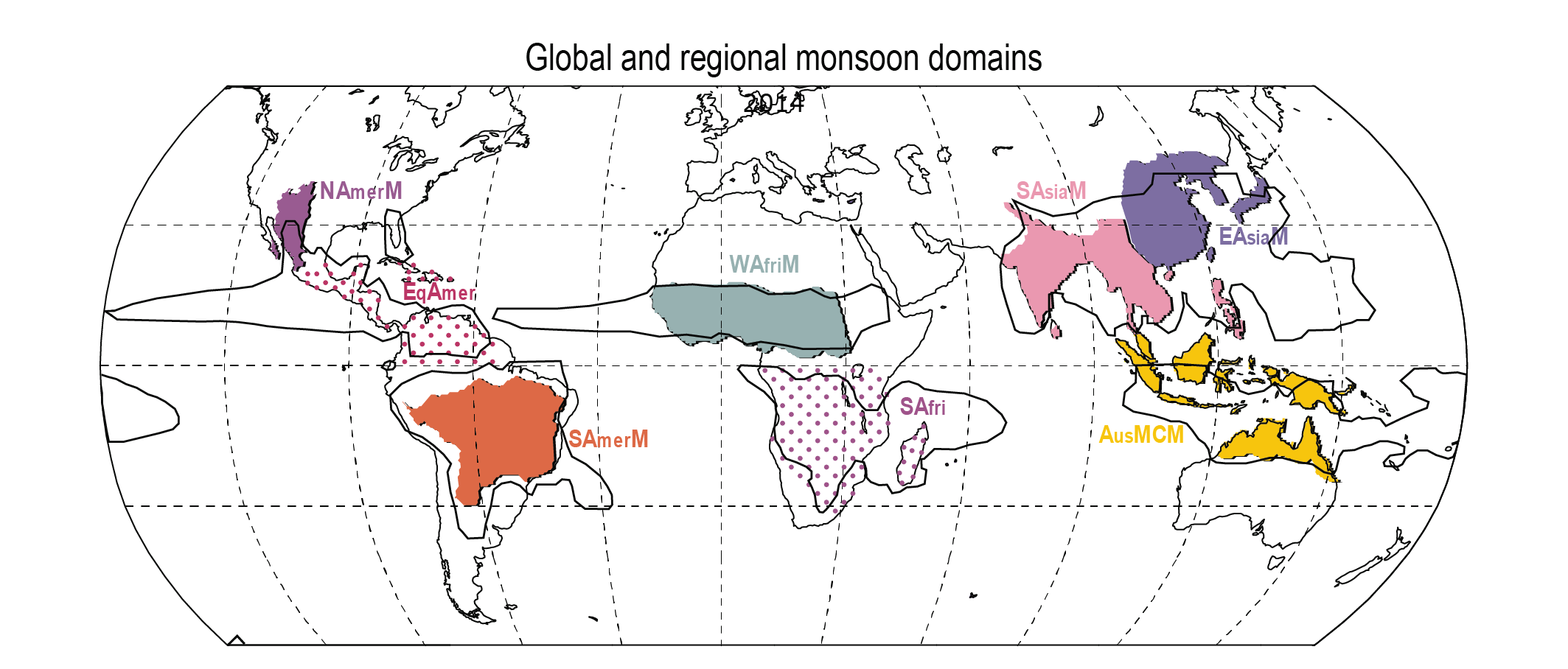Annex V Figure 1
Figure caption
Figure AIV.1 | The boreal winter North Atlantic Oscillation (NAO) and Northern Annular Mode (NAM) extracted as the leading empirical orthogonal function (EOF) of December–January–February (DJF) sea level pressure (SLP) anomalies over (a) the North Atlantic–Europe sector (20°N–80°N, 90°W–30°E, indicated by the red box) and (b) the Northern Hemisphere (north of 20°N, black domain), respectively, based on JRA-55 reanalysis over 1959–2019. (a, b) SLP anomalies regressed onto the leading principal component (PC) time series shown in (c). The NAO-PC is represented by red and blue bars, the NAM-PC by the black curve in (c); the percentages of variance explained by the mode are shown in the legends. The NAO index based on weather stations (cyan dots in (a)) is given in cyan and the zonal-NAM index (latitude circles in (b)) is given in purple. Correlation between each index and the NAO-PC time series is given in the legend. (d, e) Regression maps of blended sea surface temperature and surface air temperature over land from the ERSST and Berkeley Earth datasets, respectively, for 1959–2019 (d) and of precipitation anomalies (e); shading based on GPCC for 1959–2016 and contours based on CMAP for 1979–2019 for every 0.1 mm day–1. On maps, no overlay indicates regions where the regressions are significant based on t-test accounting for false detection rates at 10% and crosses indicate no significance. Significance for CMAP precipitation is materialized by red contours in (e). All fields have been linearly detrended prior to computation.
